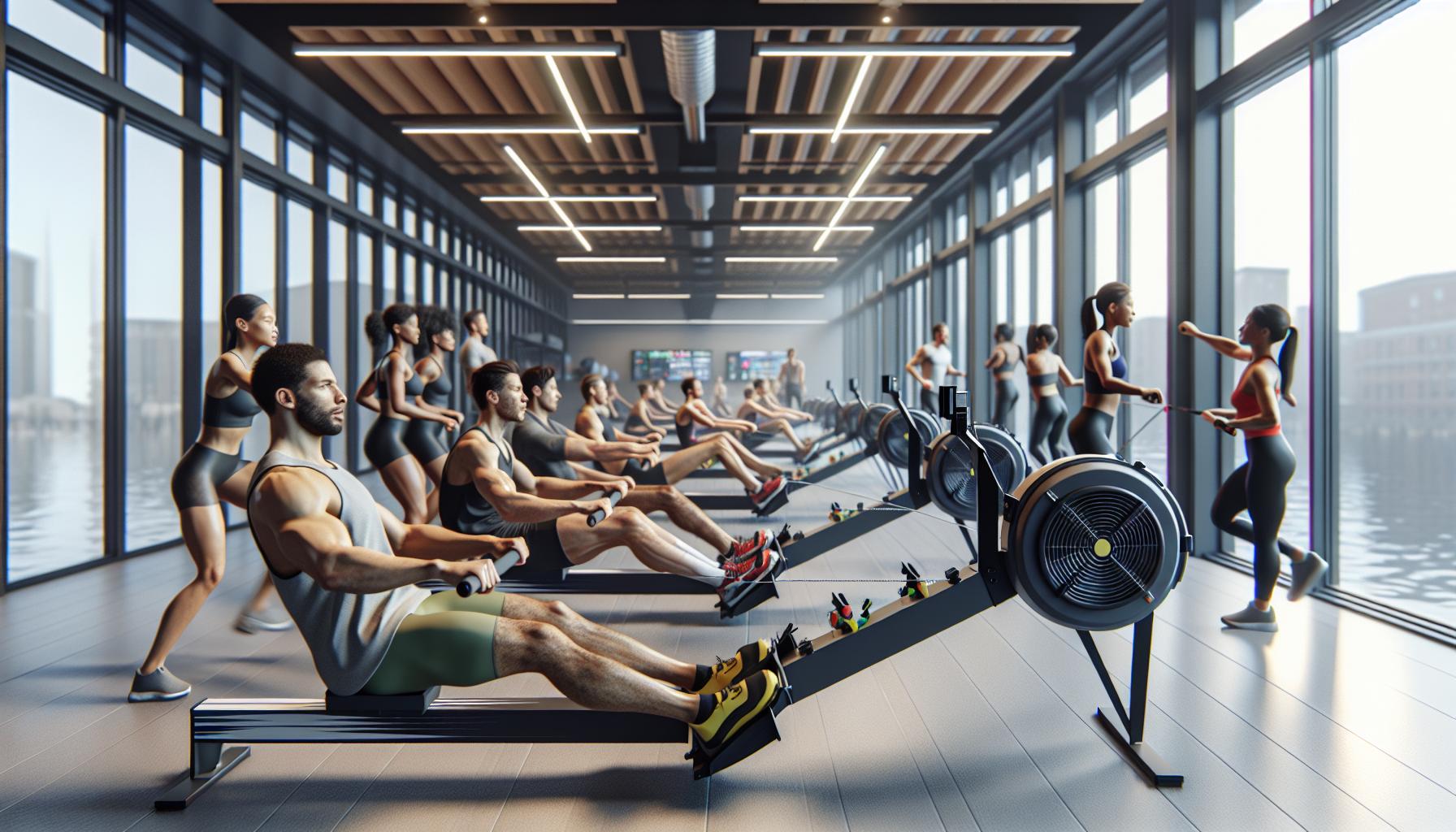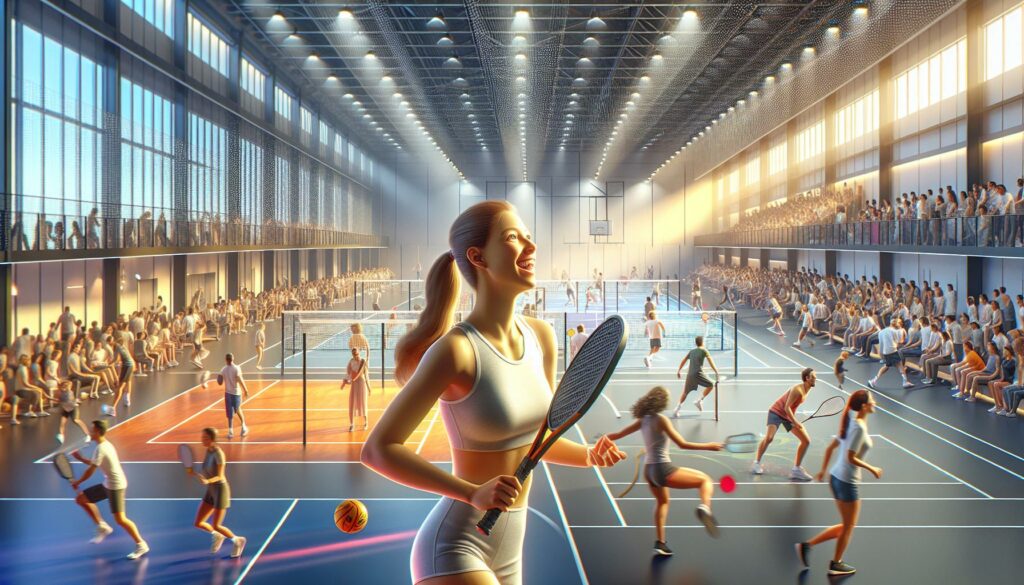Indoor sports are making a comeback like that one friend who insists they can still do a backflip after college. With the rise of innovative activities and tech-savvy gear, staying active indoors has never been more exciting. From virtual reality workouts to high-energy classes that make you sweat like you just ran a marathon, it’s clear that the future of fitness is no longer limited to the great outdoors.
Indoor Sport Trends
Indoor sport trends are witnessing a remarkable evolution, driven by innovative technologies and changing consumer preferences. Exciting activities like virtual reality workouts have surged in popularity, immersing participants in engaging environments that enhance their fitness journey. Advanced fitness equipment reflects this trend, with smart technology providing real-time feedback to optimize workout efficiency.
High-energy classes attract diverse individuals seeking community and motivation. Group exercises, such as indoor cycling and HIIT sessions, create an atmosphere of collaboration that keeps participants returning. This sense of camaraderie is essential for habitual engagement in indoor activities.
Data reflects a significant rise in interest in indoor sports. The International Health, Racquet & Sportsclub Association reported over 60 million gym memberships in 2022, indicative of growing commitment to fitness. Additionally, 23% of sports participants engaged in indoor activities frequently, highlighting a broad base of consumers embracing this trend.
Emerging indoor sport trends emphasize mental well-being alongside physical fitness. Mindfulness exercises integrated into workouts increase relaxation and improve focus, addressing the holistic approach to health. Indoor climbing gyms and obstacle course racing capture attention as dynamic alternatives to conventional workouts.
Diverse options cater to different fitness levels, attracting a wider audience. Facilities now offer specialized programs for beginners and seasoned athletes, fostering inclusion within the indoor sports community. This adaptability contributes to the ongoing growth of indoor sports, ensuring they remain relevant in the ever-evolving fitness landscape.
Popular Indoor Sports

Indoor sports are gaining traction as more people recognize their benefits and opportunities for engagement. This surge reflects a shift towards a more accommodating fitness environment.
Growing Participation Rates
Participation in indoor sports continues to rise dramatically, with reports indicating over 60 million gym memberships in 2022. The trend reveals that 23% of sports participants frequently engage in indoor activities. Increasing numbers of individuals are choosing indoor rowing and swimming, driven by convenience and weather considerations. Many also opt for yoga and group fitness classes, which promote community and support. Evolving preferences encourage facilities to expand their offerings, ensuring that various fitness levels are represented and catered to.
Impact of Technology
Technology plays a pivotal role in the evolution of indoor sports. Virtual reality workouts are reshaping user experiences, delivering engaging environments that enhance motivation. Smart gym equipment provides real-time feedback, helping individuals track progress and optimize performance. Mobile fitness apps contribute to this trend by allowing users to join classes remotely and track their fitness journeys. These advancements not only improve the overall experience but also foster greater participation, making indoor sports accessible and exciting for all.
Innovations In Indoor Sports Facilities

Innovations in indoor sports facilities showcase the shift toward advanced experiences and benefits for users.
Smart Technology Integration
Smart technology significantly enhances indoor sports experiences. Sensors in fitness equipment provide real-time feedback, allowing users to track their progress efficiently. Wearable devices also link to mobile fitness apps, enabling personalized workouts tailored to individual goals. Facilities incorporate interactive displays, creating engaging environments for group classes. Smart lighting systems adapt to activity levels, fostering the right mood for workouts. These integrations improve motivation and participation, appealing to tech-savvy fitness enthusiasts. In 2022, over 60 million gym memberships reflected increased incorporation of smart equipment, illustrating a demand for innovation in fitness environments.
Sustainability Practices
Sustainability practices play a crucial role in modern indoor sports facilities. Many facilities adopt eco-friendly designs, utilizing renewable energy sources for power. Green building materials reduce environmental impact, contributing to healthier spaces for participants. Water conservation technologies minimize waste, while energy-efficient equipment lowers energy consumption. Recycling programs in gyms help manage waste effectively. Participating in sustainable practices resonates with environmentally conscious users, enhancing community engagement. As awareness of climate issues grows, 23% of sports participants show preference for facilities prioritizing eco-friendliness, reflecting a trend in choosing sustainable options for fitness activities.
The Rise Of E-Sports

E-sports have transformed the landscape of indoor sports by introducing new levels of competition and engagement.
Virtual Competitions
Participants compete in virtual arenas across various genres, including strategy, sports simulation, and first-person shooters. The market value for e-sports reached approximately $1.4 billion in 2022, underscoring its booming popularity. Players can engage in thrilling tournaments that attract millions of viewers globally. Teams often develop a dedicated following, enhancing their competitive spirit. Gamers leverage technology to improve their skills and tactics in real-time, ensuring a dynamic gaming environment. Online streaming platforms also contribute significantly, fostering interactive experiences for fans.
Audience Engagement
Engagement tactics in e-sports drive community interaction and participation. Gamers and fans gather in virtual spaces to cheer for their favorite teams and players, creating an immersive atmosphere. Live streaming events often draw in hundreds of thousands of viewers, showcasing top-tier competitions. Social media integration facilitates real-time discussions and content sharing, deepening audience involvement. The rise of interactive features, such as polls and giveaways, further enhances viewer experiences. Organizations increasingly recognize the importance of community-building initiatives in sustaining interest and excitement in e-sports.
Health And Wellness Considerations
Engaging in indoor sports promotes physical fitness and mental well-being. Participation in activities like yoga and indoor cycling increases flexibility and reduces stress levels. Research indicates that 23% of sports participants focus on mental health during workouts by integrating mindfulness exercises.
Facilities designed for indoor sports now emphasize user health, incorporating eco-friendly materials and sustainable practices. These features align with the preferences of environmentally conscious individuals. Awareness of climate issues drives 23% of sports participants to favor sustainable facilities for their fitness routines.
Enhanced technology also plays a role in health and wellness. Smart fitness equipment provides real-time feedback to users, ensuring they maintain proper form and avoid injuries. Virtual reality workouts create immersive experiences that keep participants motivated and engaged.
Community support significantly influences individual wellness journeys. Group fitness classes foster camaraderie among participants, which enhances motivation and accountability. Individuals often report feeling more committed to their fitness goals when they share experiences with others.
Inclusive options cater to various fitness levels, allowing everyone to participate regardless of their background. Diverse indoor sports activities empower individuals to explore what suits them best. For instance, facilities often offer beginner-friendly classes, ensuring that newcomers feel welcomed and included.
Regular participation in indoor sports can lead to healthier lifestyle choices. Individuals often notice improved physical health and enhanced mood and energy levels. Setting achievable fitness goals also creates a sense of accomplishment that reinforces positive habits.
The focus on health and wellness continues to shape indoor sport trends, enhancing both physical and mental well-being for participants. Innovations within facilities ensure users have access to resources that align with contemporary health needs, supporting their long-term fitness aspirations.
Future Trends
The indoor sport trends is thriving as it adapts to modern preferences and technological advancements. With a focus on community engagement and mental well-being, these activities cater to diverse fitness levels while promoting healthier lifestyles.
As more individuals embrace the benefits of indoor sports, the integration of sustainability practices and smart technology enhances user experiences. The rise of e-sports further illustrates the evolving nature of indoor activities, attracting a new generation of participants.
This dynamic environment not only fosters physical fitness but also nurtures mental health, ensuring that indoor sports remain a vital part of the fitness journey for years to come.

